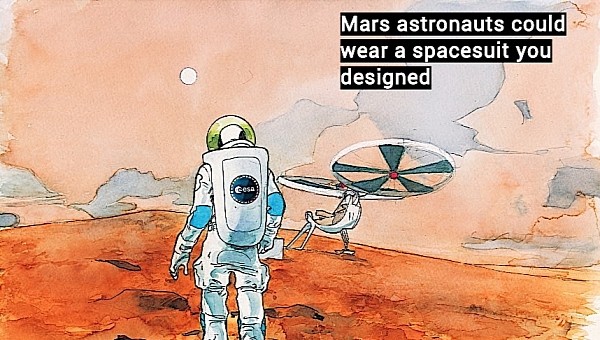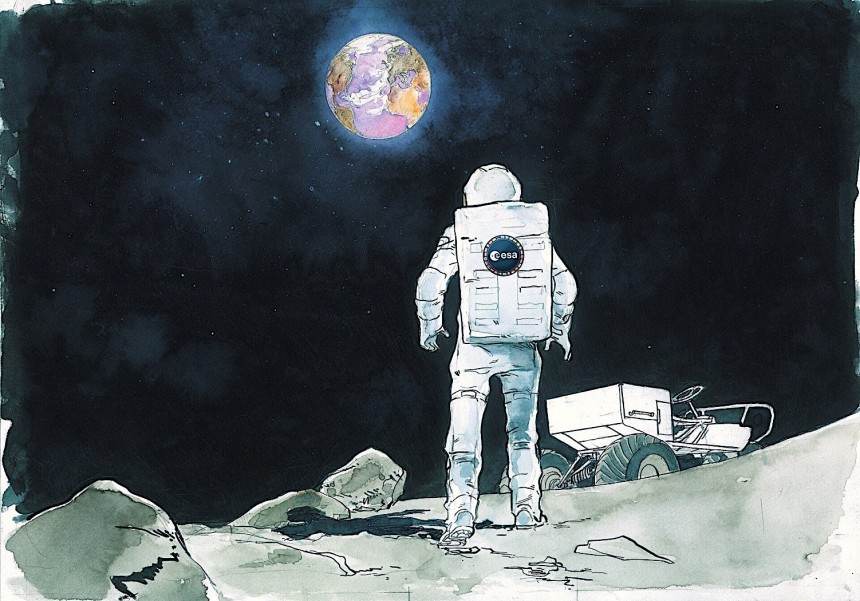For an astronaut, a spacesuit is perhaps just as important as the spaceship itself. It is the last line of defense between the frail flesh of a human and the harsh environment of outer space or some alien world. And, in some respects, it is just as hard to design and conceive as a rocket.
As the nation most involved in space exploration, the U.S. of course has in its possession the most advanced suits meant to protect astronauts in the void of space. The ones currently in use for spacewalks are called extravehicular mobility units (EMU), and were introduced all the way back in the 1980s.
Yet as America is looking to put humans on the Moon and possibly even Mars in the mid-term future, new suits are needed, better tailored at sustaining their wearers during trips outside the safety of landers.
In light of the now-in-progress Artemis Moon exploration program, NASA announced in the summer of last year it will have a new kind of spacesuit for the astronauts touching down on the surface of the Moon as part of the Artemis III mission.
In all, the American space agency will pour no less than $3.5 billion in the development and purchase of spacesuits as part of an indefinite delivery and indefinite quantity contract assigned to Axiom Space and Collins Aerospace.
The new suit is called Exploration Extravehicular Mobility Unit (xEMU), and should allow Artemis astronauts to survive temperatures between minus 250 degrees and up to 250 degrees Fahrenheit (minus 156 to 121 degrees Celsius), but also to withstand the abundance of dust on the Moon.
But NASA is not the only agency looking at creating new tech for future missions. Its European counterpart, ESA, has big plans in the years ahead too. True, most of these plans, which include trips to the Moon and Mars, are closely linked to those of the Americans, but that doesn’t mean the agency wouldn’t like a suit of its own.
In fact, it would love it, and for that ESA needs the public’s help. This week, the agency launched a call to “creative minds to envision what a European spacesuit should look like.”
The competition, open to anyone interested in the European space program, is a virtual one, and will have people try their luck at coming up with the design and branding of the ESA spacesuit.
There are, of course, some requirements that must be met. All designs have to include things like the backpack holding the life support systems, a visor meant to filter various lighting conditions, and need to be capable of supporting pressurization, so expect some bulky creations.
Also not to be overlooked is the fact the suits need to have “a minimum of seven different layers of materials,” but also the interface needed to control the life support system. Of equally critical importance is the placement of flags showing the wearer’s nationality.
Because this is, for now, only a virtual design competition, technical specifications can be ignored.
The competition is open until February 28. Evaluation of the entries will begin on March 1, but we’re not told anything on when a winning design, if any, could be announced.
Yet as America is looking to put humans on the Moon and possibly even Mars in the mid-term future, new suits are needed, better tailored at sustaining their wearers during trips outside the safety of landers.
In light of the now-in-progress Artemis Moon exploration program, NASA announced in the summer of last year it will have a new kind of spacesuit for the astronauts touching down on the surface of the Moon as part of the Artemis III mission.
In all, the American space agency will pour no less than $3.5 billion in the development and purchase of spacesuits as part of an indefinite delivery and indefinite quantity contract assigned to Axiom Space and Collins Aerospace.
The new suit is called Exploration Extravehicular Mobility Unit (xEMU), and should allow Artemis astronauts to survive temperatures between minus 250 degrees and up to 250 degrees Fahrenheit (minus 156 to 121 degrees Celsius), but also to withstand the abundance of dust on the Moon.
In fact, it would love it, and for that ESA needs the public’s help. This week, the agency launched a call to “creative minds to envision what a European spacesuit should look like.”
The competition, open to anyone interested in the European space program, is a virtual one, and will have people try their luck at coming up with the design and branding of the ESA spacesuit.
There are, of course, some requirements that must be met. All designs have to include things like the backpack holding the life support systems, a visor meant to filter various lighting conditions, and need to be capable of supporting pressurization, so expect some bulky creations.
Also not to be overlooked is the fact the suits need to have “a minimum of seven different layers of materials,” but also the interface needed to control the life support system. Of equally critical importance is the placement of flags showing the wearer’s nationality.
Because this is, for now, only a virtual design competition, technical specifications can be ignored.
The competition is open until February 28. Evaluation of the entries will begin on March 1, but we’re not told anything on when a winning design, if any, could be announced.








